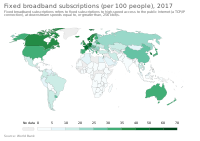
Photo from wikipedia
A unit-cell-free truncated impedance sheet model is proposed for the modeling and design of low-profile broadband metasurface antennas (MAs) composed of nonresonant unit cells using characteristic mode analysis. Different from… Click to show full abstract
A unit-cell-free truncated impedance sheet model is proposed for the modeling and design of low-profile broadband metasurface antennas (MAs) composed of nonresonant unit cells using characteristic mode analysis. Different from conventional MAs with locally resonant unit cells, the nonresonant unit cells of the proposed MAs only contribute to the grid impedance and the MA operates with the global resonances of the metasurfaces. New measures are also reported to incorporate a higher order metasurface mode for wideband radiation. A low-profile broadband MA is designed at the 5 GHz Wi-Fi bands for the proof of concept. Three modes are excited simultaneously, including a quasi-TM01 mode, a quasi-TM21 mode, and a dipole mode. With a size of
Journal Title: IEEE Transactions on Antennas and Propagation
Year Published: 2018
Link to full text (if available)
Share on Social Media: Sign Up to like & get
recommendations!